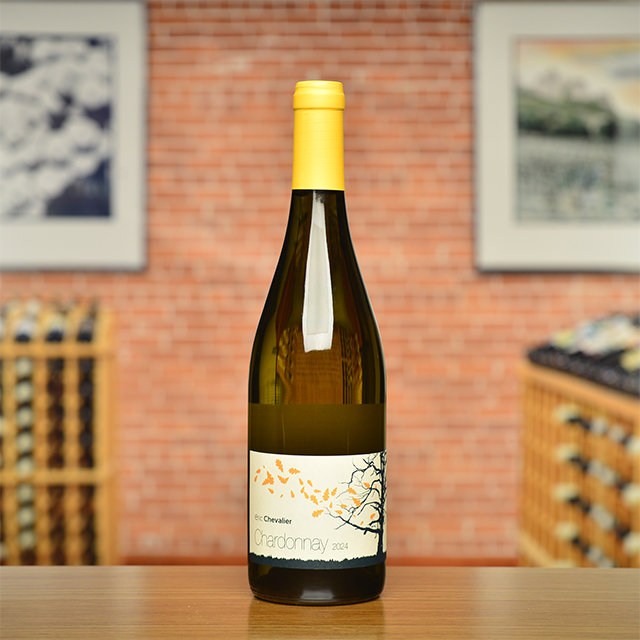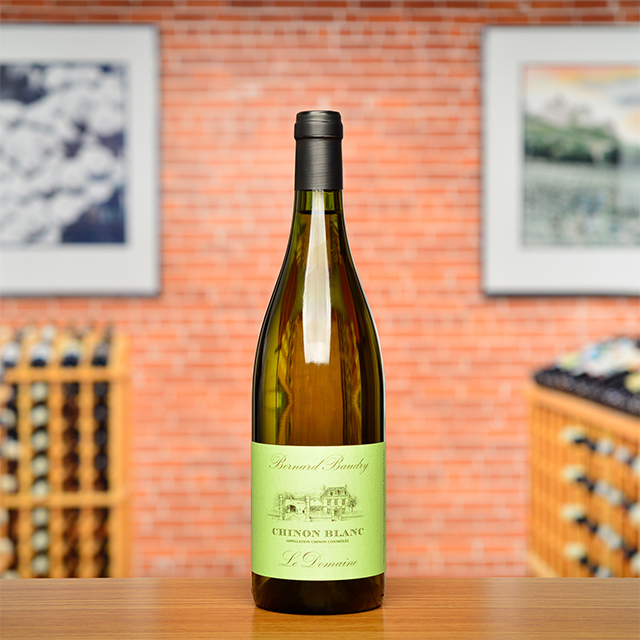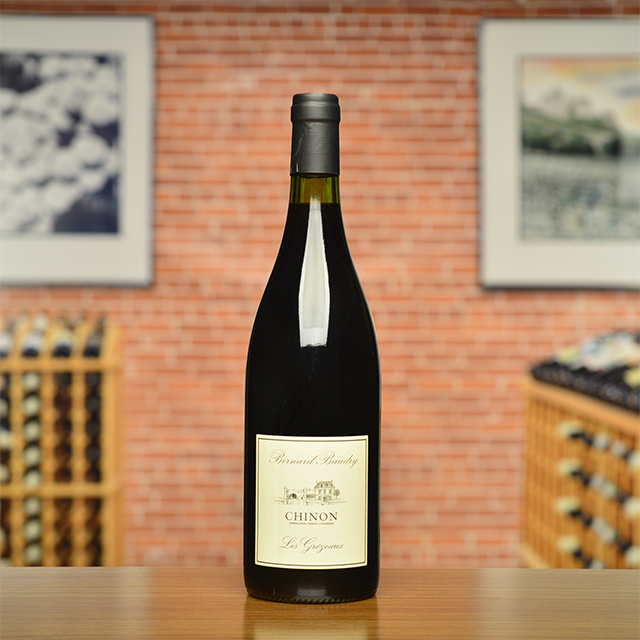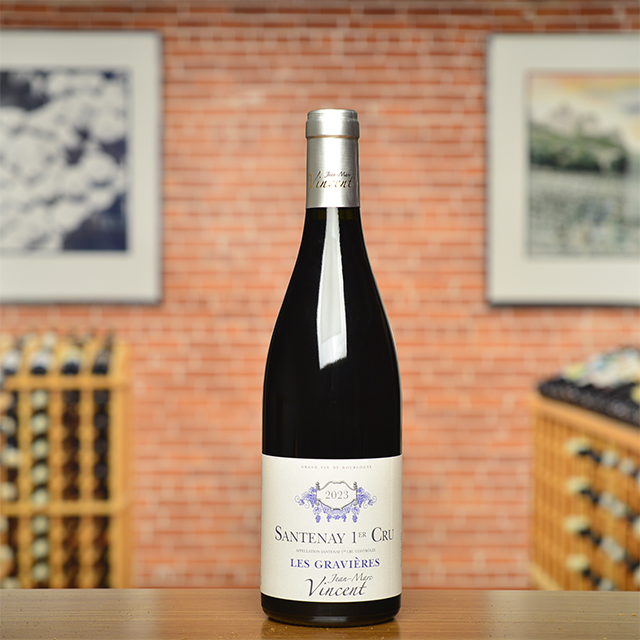Notify me
2019 Chinon Blanc “La Croix Boissée”
Bernard Baudry
Nearly fifty miles upriver of Savennières, Chenin takes on a remarkably different personality. Rather than schist, the vines dig through compact strata of clay and powdery white limestone, imbuing the wine with ample flesh to coat its chalky core. A subtle kiss of oak from fermentation in 500-liter puncheons adds nuance and a fine grain. Baudry is among the Loire’s most reliable names for authentic, age-worthy reds produced via natural methods, and the same holds true for the domaine’s rare, precious blanc.
—Anthony Lynch
| Wine Type: | white |
| Vintage: | 2019 |
| Bottle Size: | 750mL |
| Blend: | Chenin Blanc |
| Appellation: | Chinon |
| Country: | France |
| Region: | Loire |
| Producer: | Bernard Baudry |
| Vineyard: | Planted between 1994 and 2004, .5 ha |
| Soil: | Clay, Sand, White Limestone |
| Farming: | Organic (practicing) |
| Alcohol: | 13.5% |
More from this Producer or Region

2021 Chinon “Le Clos Guillot”
France | Loire
Even though all of the wines hail from Chinon, the soil, elevation, and exposition all combine to make Le Clos Guillot their cuvée with the most finesse.

2024 Chardonnay
France | Loire
Some wines deliver well beyond expectations—this is one of them.

2021 Chinon “La Croix Boissée”
France | Loire
This is the grandest bottling of Cabernet Franc from one of Chinon’s most outstanding producers.

2023 Chinon Blanc
France | Loire
A rare Chenin Blanc from the land of Cabernet Franc. Ultra fresh and brimming with citrus blossom and orchard fruit notes, it has a saline, mineral finish that leaves my palate simultaneously satisfied and begging for more. Try it with fresh trout, grilled whole topped with chimichurri or smoked and tossed into a Niçoise salad.

2022 Chinon Blanc
France | Loire
Ultra fresh and brimming with citrus blossom and orchard fruit notes, it has a saline, mineral finish that leaves my palate begging for more.

2024 Chinon Rosé
France | Loire
Matthieu Baudry captures both youthful fruit and energizing mineral textures with this rosé.

2022 Saumur Champigny “Terres Chaudes”
France | Loire
Thierry has perfected the art of coaxing this Cabernet Franc’s soulfulness and elusive finesse into bottle.

2023 Chinon “Le Domaine”
France | Loire
It’s a textbook Chinon, and you’ll struggle to find a red as authentic and perfectly suited to your fall table.

2023 Chinon “Les Grézeaux”
France | Loire
Les Grézeaux comes from the Baudry’s oldest vines, which yield a concentrated and silky rouge that is ready to drink today but will age beautifully.

2024 Chinon “Les Granges”
France | Loire
Les Granges is the Baudry cuvée to drink in its youth, while the perfume of rose petals and brambly berries is at its most vivid and vibrant.
About The Producer
Bernard Baudry
About The Region
Loire

The defining feature of the Loire Valley, not surprisingly, is the Loire River. As the longest river in France, spanning more than 600 miles, this river connects seemingly disparate wine regions. Why else would Sancerre, with its Kimmeridgian limestone terroir be connected to Muscadet, an appellation that is 250 miles away?
Secondary in relevance to the historical, climatic, environmental, and cultural importance of the river are the wines and châteaux of the Jardin de la France. The kings and nobility of France built many hundreds of châteaux in the Loire but wine preceded the arrival of the noblesse and has since out-lived them as well.
Diversity abounds in the Loire. The aforementioned Kimmeridgian limestone of Sancerre is also found in Chablis. Chinon, Bourgueil, and Saumur boast the presence of tuffeau, a type of limestone unique to the Loire that has a yellowish tinge and a chalky texture. Savennières has schist, while Muscadet has volcanic, granite, and serpentinite based soils. In addition to geologic diversity, many, grape varieties are grown there too: Cabernet Franc, Chenin Blanc, Sauvignon Blanc, and Melon de Bourgogne are most prevalent, but (to name a few) Pinot Gris, Grolleau, Pinot Noir, Pineau d’Aunis, and Folle Blanche are also planted. These myriad of viticultural influences leads to the high quality production of every type of wine: red, white, rosé, sparkling, and dessert.
Like the Rhône and Provence, some of Kermit’s first imports came from the Loire, most notably the wines of Charles Joguet and Château d’Epiré—two producers who are featured in Kermit’s book Adventures on the Wine Route and with whom we still work today.
More from Loire or France
2019 Vouvray “Bois Guyon”
Catherine & Pierre Breton France | Loire
2022 Jasnières “Cuvée Sainte Narcisse”
Pascal Janvier France | Loire
2020 Bourgueil “Les Perrières”
Catherine & Pierre Breton France | Loire
Vouvray Brut “La Dilettante”
Catherine & Pierre Breton France | Loire
2023 Bourgueil “Cuvée Alouettes”
Domaine de la Chanteleuserie France | Loire
2024 Bourgueil “Trinch!”
Catherine & Pierre Breton France | Loire
2020 Saumur Champigny “Outre Terre”
Thierry Germain France | Loire
2024 Vouvray “Les Fondraux”
Champalou France | Loire
2017 Jasnières “Chant de Vigne”
Christine de Mianville France | Loire
2020 Vin de France Blanche
Domaine Michel Brégeon France | Loire
2024 Muscadet Côtes de Grand Lieu sur lie “La Nöe”
Eric Chevalier France | Loire
2016 Chinon “Les Varennes du Grand Clos” MAGNUM
Charles Joguet France | Loire
2019 Vouvray “Bois Guyon”
Catherine & Pierre Breton France | Loire
2022 Jasnières “Cuvée Sainte Narcisse”
Pascal Janvier France | Loire
2020 Bourgueil “Les Perrières”
Catherine & Pierre Breton France | Loire
Vouvray Brut “La Dilettante”
Catherine & Pierre Breton France | Loire
2023 Bourgueil “Cuvée Alouettes”
Domaine de la Chanteleuserie France | Loire
2024 Bourgueil “Trinch!”
Catherine & Pierre Breton France | Loire
2020 Saumur Champigny “Outre Terre”
Thierry Germain France | Loire
2024 Vouvray “Les Fondraux”
Champalou France | Loire
2017 Jasnières “Chant de Vigne”
Christine de Mianville France | Loire
2020 Vin de France Blanche
Domaine Michel Brégeon France | Loire
2024 Muscadet Côtes de Grand Lieu sur lie “La Nöe”
Eric Chevalier France | Loire
2016 Chinon “Les Varennes du Grand Clos” MAGNUM
Charles Joguet France | Loire
Kermit once said...

Kermit once said...
Let the brett nerds retire into protective bubbles, and whenever they thirst for wine it can be passed in to them through a sterile filter. Those of us on the outside can continue to enjoy complex, natural, living wines.
Inspiring Thirst, page 236
















